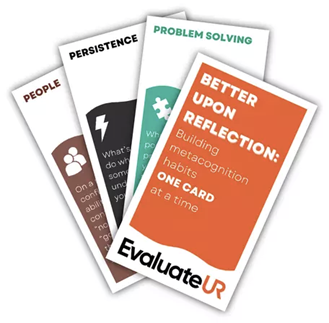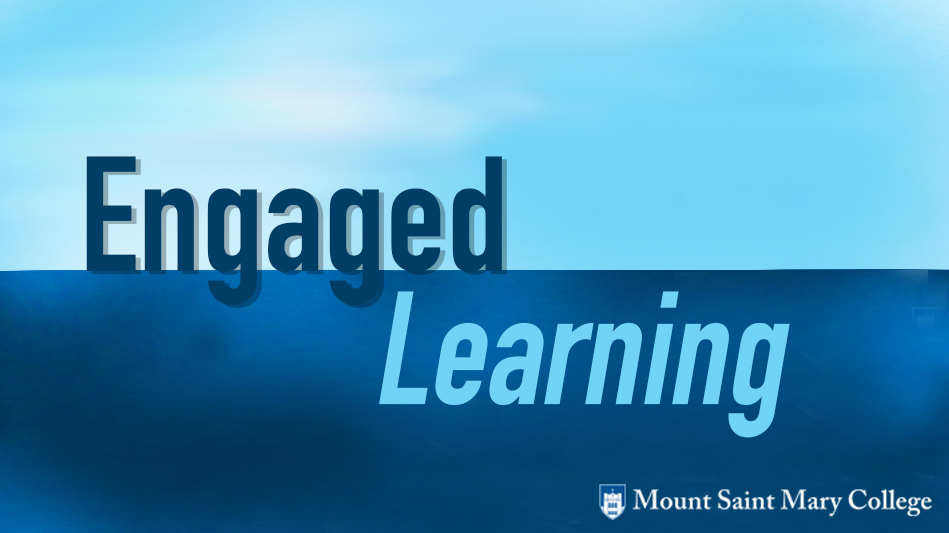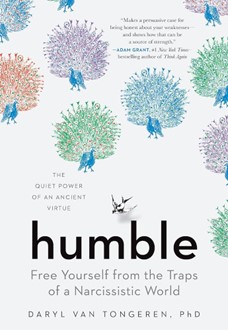by Gina Burkart, EdD, Learning Specialist, Clarke University
The Process of Metacognition
As retention continues to dominate discussions at most universities, metacognition may provide much insight. Flavell’s (1979) early and hallmark work on metacognition defined metacognition as an individual’s reflection on how he or she learns and developed a model to depict the process of this reflection. According to Flavell (1979), metacognition “occurs through the actions and interactions” of “metacognitive knowledge,” “metacognitive experiences,” “goals/tasks,” “actions/strategies” (p. 906). Understanding how the metacognitive process impacts learning is key to developing effective curriculum, helping students learn material, and motivating students to learn.
Self-Assessment to Enhance One-on-one Mentoring
As the Learning Specialist at Clarke University, one of my responsibilities is meeting with, monitoring, and guiding students in finding effective learning strategies. In this role, I meet with students one-on-one, reach out to students who have received student concerns flags raised by professors, create and coordinate academic support (Academic Coaching and Supplemental instruction), collaborate and guide faculty in developing curriculum through workshops and consultations, and hire, train and supervise the Academic Coaches in the Academic Learning, mentor and meet with students placed on Academic Warning and Probation, and teach the College Study Strategy course and courses in the English department.
In working with students who have been placed on probation and warning, I find that students often fail because they lack motivation and purpose. And, commonly, the motivation and purpose have been affected by inaccurate metacognitive knowledge. Flavell’s (1979) model of Cognitive Monitoring offers a schema for understanding how this might occur and how to help students find motivation and purpose and improve their academic standing.
As noted earlier, Flavell (1979) found that our metacognitive knowledge is informed by our metacognitive experiences. Thus, negative experiences or experiences where distorted thought processes created inaccurate metacognitive knowledge about self might result in a lack of purpose or motivation. For example, if a first-year student fails two tests in Biology and compares himself or herself to some classmates who received As, he or she might conclude that he or she is incapable of learning Biology, is not capable of ever becoming a doctor, and should not attend college.
In meeting with the student, I would help the student reflect on how he or she was reading, studying, and taking notes in the Biology course. Additionally, I would help the student reflect on time management and organization strategies. I would also point out the flaw in comparing oneself with others in assessing one’s own abilities. Once the student realizes the flaws of thinking and forms new metacognitive knowledge and experiences, he or she works with me to establish realistic goals and implement new strategies for achieving the goals. Motivation and purpose then quickly improve, and students find success. In some instances students have moved from academic probation to Dean’s List in as little as one semester.
Helping students find success involves helping them discover what they believe about themselves (metacognitive self knowledge), setting goals and finding strategies to achieve the goals. To begin this process, students must first reflect on and assess themselves. As research has shown, unless the self-system is activated, learning will not occur (Mead, 1962/1934; Bandura, 1994; Marzano, 2001; Piaget, 1954; Vygotsky, 1934/1987; Burkart, 2010).
Incorporating Self-Assessment in the College Classroom
In addition to working with students in one-on-one mentoring, I have also found that this type of cognitive monitoring can be fostered in the classroom through the use of self-assessments. As demonstrated by Taraban (2019), self-assessments can be simple or more nuanced depending on the preferences of the professor and the needs of the course curriculum. The self-assessment can be created by the professor or be a nationally normed assessment. Additionally, the assessments can be closely connected to the outcomes of the course and revisited throughout the semester.
I have integrated self-assessments into my own teaching in a variety of ways. For example, in the College Study Strategy course that I teach, I begin the semester with an informal self-assessment by having students rate themselves (5 high and 1 low) in the following course content areas that impact academic performance: reading, time management, organization, test taking, and studying. Additionally, I have them identify strengths and weaknesses in each of these areas and set goals (See Figure 1 for a sample self-assessment and Figure 2 for a sample goal-setting chart).
Students then complete a more formal self-assessment, the nationally normed LASSI (Learning and Study Strategies Inventory). This self-assessment is quick and easy (takes about 10 minutes) and allows students to see how they compare nationally with other students taking the inventory in the following areas: Selecting Main Ideas, Information Processing, Time Management, Self-Testing, Motivation, Concentration, Attitude, Use of Academic Resources, and Test Taking. Students then share their assessments with each other in pairs and large group discussions. In almost all cases, the LASSI and informal assessments match and students find the LASSI results to be accurate. The comparison of data from a nationally normed self-assessment with an informal self-assessment offers students a way for checking the accuracy of their knowledge of self.
These assessments also provide purpose and focus for the course. Class discussion based on the self-assessment establishes buy-in from the students as they see personal need for the course. Additionally, I have found that starting the semester with these assessments frames the course in that I (as the professor) have a better understanding of their skill levels and needs and can connect their assessments to the course curriculum and outcomes.
For example, in Week One when we are going over Time Management and time management strategies, I can refer back to the students’ self-assessments and goals. Asking the students to recall their scores and goals begins the process of cognitive monitoring (Flavell, 1979). It creates purpose and motivation for the students to learn the curriculum I am teaching and integrate it into their courses so that they will begin to develop and apply the new time management strategies in order to achieve their time management goals.
Students are then tasked with implementing the strategies in their courses and asked to display artifacts of the implemented strategies in a midterm and final portfolio that is shared in a personal conference with me. For example, a student may include a long-term planner of the semester with mapped out projects, papers, tests, and athletic games to show that they have started to use macro-level planning for time management. They might also include sample pages from a weekly planner to show prioritized “to-do” lists and items crossed off—micro-level planning.
Students also assess themselves again with the same informal self-assessments at midterm and at the end of the semester. Additionally, they retake the LASSI at the end of the semester and use the self-assessments and artifacts to compile a portfolio that includes a one-page reflection. In the final conference meeting with me, students use the portfolio to demonstrate their growth, as they discuss their goals, strategies used, plans for future goals, and growth.
Integrating Self-Assessment—As a Tool of Metacognition
In assessing themselves, students gain knowledge of what they believe about themselves and how they learn. In reflecting on their assessments and discussing their experiences with me in conferences and with other students in the class, students uncover inaccurate perceptions of self. Additionally, they form goals and learn and develop strategies that positively affect their college learning experience. This sharing of information also allows me, as the professor and Learning Specialist, to also engage in metacognition as I teach and develop curriculum to meet the needs of my students throughout the semester (Burkart, 2017). And while some may question the validity of self-assessments, Nuhfer (2018), found self-assessments to not only be valid but also to be useful tools for both professors and students to monitor learning.
Above I offered examples of how self-assessment is easily integrated into a college study strategy course; however, it can easily be integrated into any course. For example, in teaching literature or writing courses, I create self-assessments unique to that content area and the course outcomes. In literature courses, on the first day of the semester, I ask students to assess themselves in the following areas: critical reading, writing, speaking, time management, and small group work. I also have students read through the syllabus, create goals for each of those areas, and identify strategies they will use to achieve those goals. Additionally, I have them respond to the following questions:
- What do you hope to get out of this course? How does it connect with your career and life goals?
- How can I help you achieve your goals?
- What challenges do you anticipate this semester? What resources are available to help you meet those challenges?
- What else do you want me to know about you and what you have going on this semester?
Students share their assessments in small groups. Then, as a large group, we discuss the assessments and the syllabus. I collect the assessments, comment on them, and then return them. Students refer back to them again at midterm and at the end of the semester when they complete synthesis reflections about their growth and achievement of course outcomes.
Benefits of incorporating student self-assessment
The inclusion of these assessments has been helpful in many ways. They have helped students feel that they are listened to by their professor. The assessments also assist me in quickly and easily conducting a needs assessment of my students so that I can reflect upon and adjust my teaching to their needs (i.e. engage in metacognitive instruction).
Most importantly, it encourages students to reflect on their own learning and empowers them to take control of their learning and results in increased motivation and a sense of purpose; this is the power of metacognition and why it matters to retention. When this recursive process activates the self-system (Mead, 1962/1934; Bandura, 1994; Marzano, 2001; Piaget, 1954; Vygotsky, 1934/1987; Burkart, 2010), it develops grit and a growth mindset (Burkart, 2010; Duckworth, 2019; Dweck, 2007). And as Flavell (1979) noted, fostering cognitive monitoring is an important part of learning, as there is “far too little rather than enough or too much cognitive monitoring in this world” (p. 910).
References
Bandura, A. (1994). Self-efficacy. In V. S. Ramachaudran (Ed.), Encyclopedia of human behavior (Vol. 4, pp. 71-81). New York: Academic Press. Retrieved from http://www.des.emory.edu/mfp/BanEncy.html
Burkart, G. (2017, 3rd ed). 16 weeks to college success. Kendall Hunt: Dubuque, IA.
Burkart, G. (2017, fall). Using the LASSI to engage metacognitive Strategies that foster a growth mindset in college students placed on academic probation (per request). LASSI in Action. Retrieved from https://www.hhpublishing.com/ap/_assessments/LASSI-in-Action-Articles/LASSI-In-Action-Fall-2017.pdf
Burkart, G. (2010, Dec). First-Year College Student Beliefs about Writing Embedded in Online Discourse: An Analysis and Its Implications to Literacy Learning. (Unpublished doctoral dissertation). University of Northern Iowa, Cedar Falls, IA.
Burkart, G. (2010, May). An analysis of online discourse and its application to literacy learning, The Journal of Literacy and Learning. Retrieved from http://www.literacyandtechnology.org/uploads/1/3/6/8/136889/jlt_v11_1.pdf#page=64
Duckworth, A. L., Quirk, A. Gallop, R., Hoyle, R. H., Kelly, D. R., & Matthews, M. D. (2019). Cognitive and noncognitive predictors of success. Proceedings of the National Academy of Sciences, 116(47), 23499-23504. Doi:10.1073/pnas.1910510116.
Dweck, C. (2007). Mindset: The new psychology of success. New York: Ballantine Books.
Flavell, J. (1979). Metacognitive monitoring: A new area of cognitive development inquiry. American Psychologist 34(10), 906-9-11.
Marzano, R. J. (2001). Designing a new taxonomy of educational objectives. Thousand Oaks, CA: Corwin Press.
Mead, G. H. (1934). Mind, self, and society: From the standpoint of a social behaviorist.
Nuhfer, E. (2018). Measuring metacognitive self-assessment: Can it help us assess higher-order thinking. Improve with Metacognition. Retrieved from
Piaget J. (1959). The language and thought of the child. Hove, UK: Psychology Press.
Taraban, R. (2019). The metacognitive reading strategies questionnaire (MRSQ): Cross-cultural comparisons. Improve with Metacognition. Retrieved from https://www.improvewithmetacognition.com/metacognitive-reading-strategies/
Vygotsky L. S. (1934/1987). Thinking and speech. The collected works of Lev Vygotsky (Vol. 1). New York, NY: Plenum Press.




